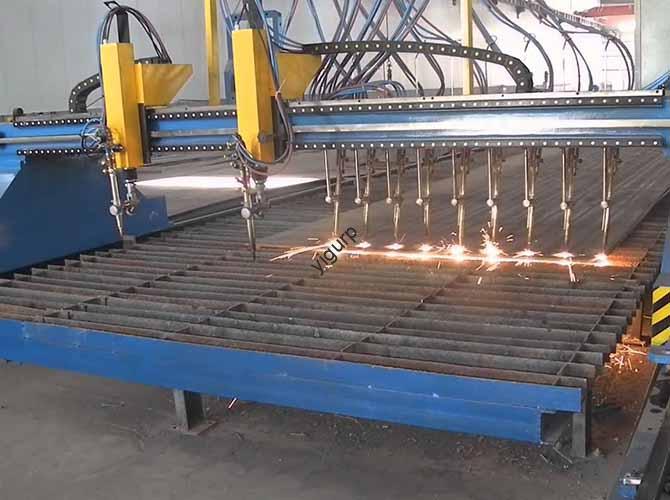Surface finish is a critical metric for CNC-machined parts, directly impacting functionality, estética, and performance—especially in industries like aerospace, dispositivos médicos, e automotivo. This article breaks down actionable strategies to enhance CNC machining surface finish, using clear comparisons, Insights orientados a dados, and practical solutions.
1. Primeiro: Understand Surface Finish Evaluation Metrics
Before improving surface finish, you need to measure it accurately. The table below compares the most common evaluation indicators, their definitions, e casos de uso:
| Indicator | Definição | Recurso -chave | Caso de uso ideal |
| Valor da RA | Arithmetic average of surface microscopic undulations (in μm) | Mais amplamente utilizado; simple to measure | General CNC parts (virando, moagem) |
| N-level Standard | ISO grading system (N1 to N12) | Smaller number = higher finish | International quality compliance |
| Rz Value | Ten-point height of roughness (peak-to-valley average) | Reflects extreme surface irregularities | Parts with strict wear resistance requirements |
| Grit Size | Measure of sanding/polishing particle fineness | Larger grit number = finer surface | Post-machining polishing (Por exemplo, ligas de alumínio) |
2. Core Factors That Harm CNC Surface Finish: A Contrast
Poor surface finish often stems from mismanagement of key variables. Below is a contrast between detrimental practices e optimal controls for critical factors:
| Fator | Detrimental Practices (Causes Roughness) | Optimal Controls (Boosts Smoothness) |
| Tool Conditions | Dull edges, low-wear materials (Por exemplo, HSS), Sem revestimento | Ultra-fine grain carbide ou PCD (polycrystalline diamond) ferramentas; TiAlN-coated edges |
| Parâmetros de corte | Baixa velocidade do fuso, high feed rate, deep cutting depth | Alta velocidade (reduces tool mark spacing), low feed (0.05–0.1 mm/rev), shallow depth (0.1–0,3 mm) |
| Material Prep | Unprocessed alloys (internal stress), metais macios (Burrs) | Stress relief treatment (para peças de paredes finas); pre-machining deburring (para ligas de alumínio) |
| Cooling/Lubrication | Insufficient coolant, external cooling only (Para buracos profundos) | Combinado high-pressure internal cooling + external cooling; coolant matched to material (Por exemplo, mineral oil for steel) |
| Machine/Fixture Stability | Loose clamps, low-rigidity CNC machines | High-precision 5-axis linkage machines; rigid clamp designs (avoids vibration-induced ripples) |
3. Step-by-Step Strategies to Improve Surface Finish
Follow this linear, actionable process to achieve consistent, high-quality surface finish:
Etapa 1: Optimize Tools and Cutting Parameters
- Usar imported PCD tools for non-ferrous metals (Por exemplo, alumínio) to avoid sticking and burrs.
- Aplique a “de alta velocidade, low-feed” finishing strategy: Para peças de aço, set spindle speed to 3,000–6,000 RPM, taxa de alimentação para 0.08 mm/rev, and cutting depth to 0.2 milímetros.
- Conduct 2–3 trimming passes to eliminate residual tool marks from rough machining.
Etapa 2: Enhance Cooling and Chip Evacuation
- For deep-hole machining (Por exemplo, boreholes >10x diameter), usar high-pressure internal cooling (30–50 bar) to direct coolant to the cutting zone—this reduces heat and washes away chips immediately.
- Choose water-soluble coolant for aluminum (evita a oxidação) and mineral oil for stainless steel (reduz o atrito).
Etapa 3: Upgrade Equipment and Processes
- Replace old 3-axis machines with 5-axis linkage CNC equipment for complex surfaces (Por exemplo, Blades de turbina)—it minimizes re-clamping errors and vibration.
- Adotar turn-mill composite machining for parts with multiple features (Por exemplo, shafts with threads and slots)—completing all operations in one clamping avoids surface scratches from repositioning.
Etapa 4: Implement Quality Control and Post-Processing
- Establish a full-chain quality check: Por exemplo, conduct IPQC (In-Process Quality Control) inspections every 2 horas (as used by Wemet factory) to catch deviations early.
- Add post-processing steps:
- Test oxidation before anodizing to solve “material flowering” (uneven color) in aluminum parts.
- Usar blister packaging for transportation to prevent “three injuries”: abrasions, bruises, and hanging injuries.
4. Typical CNC Machining Methods: Finish Ranges and Improvement Tips
Different CNC processes yield varying baseline surface finishes. Use this table to set targets and identify improvement opportunities:
| Método de usinagem | Baseline Ra Range (μm) | Improvement Tip |
| Ordinary Turning | 1.6–0.8 | Upgrade to mirror turning (use finely ground PCD tools) for Ra 0.04–0.01 μm |
| Rough Milling | 20–5 | Switch to fine milling with carbide tools for Ra 6–0.63 μm |
| Fine Boring (Aço) | 0.63–0.08 | Add a final honing pass to reach Ra <0.04 μm |
| Ultra-Precision Grinding | 0.04–0.01 | Use mirror grinding (diamond abrasives) for Ra <0.01 μm |
Perspectiva da tecnologia YIGU
Na tecnologia Yigu, we believe improving CNC surface finish is not just about optimizing single factors—it’s about integrating tool selection, controle de processo, and quality management into a seamless workflow. Our clients in the medical and automotive sectors often require Ra values below 0.1 μm; to meet this, we combine 5-axis CNC machines with custom PCD tools and real-time coolant monitoring. Adicionalmente, we’ve developed a post-processing oxidation test that reduces “material flowering” rates by 90%, ensuring consistent aesthetics. Para fabricantes, investing in these integrated solutions not only boosts surface finish but also cuts rework costs by up to 30%.
Perguntas frequentes
- What is the minimum Ra value achievable with CNC machining?
With ultra-precision processes like mirror turning or mirror grinding, Valores de RA tão baixos quanto 0.01 μm can be achieved—suitable for high-end optical or medical parts.
- Can soft materials like aluminum achieve the same surface finish as steel?
Sim, but aluminum requires extra steps: Use PCD tools to avoid burrs, apply high-pressure cooling, and conduct post-machining polishing. Aluminum can reach Ra 0.04 μm, comparable to fine-turned steel.
- How does machine rigidity affect surface finish?
Low-rigidity machines cause vibration between the tool and workpiece, leading to ripples or deep tool marks. High-rigidity 5-axis machines suppress this vibration, ensuring Ra values stay consistent across the entire part—critical for complex geometries.
